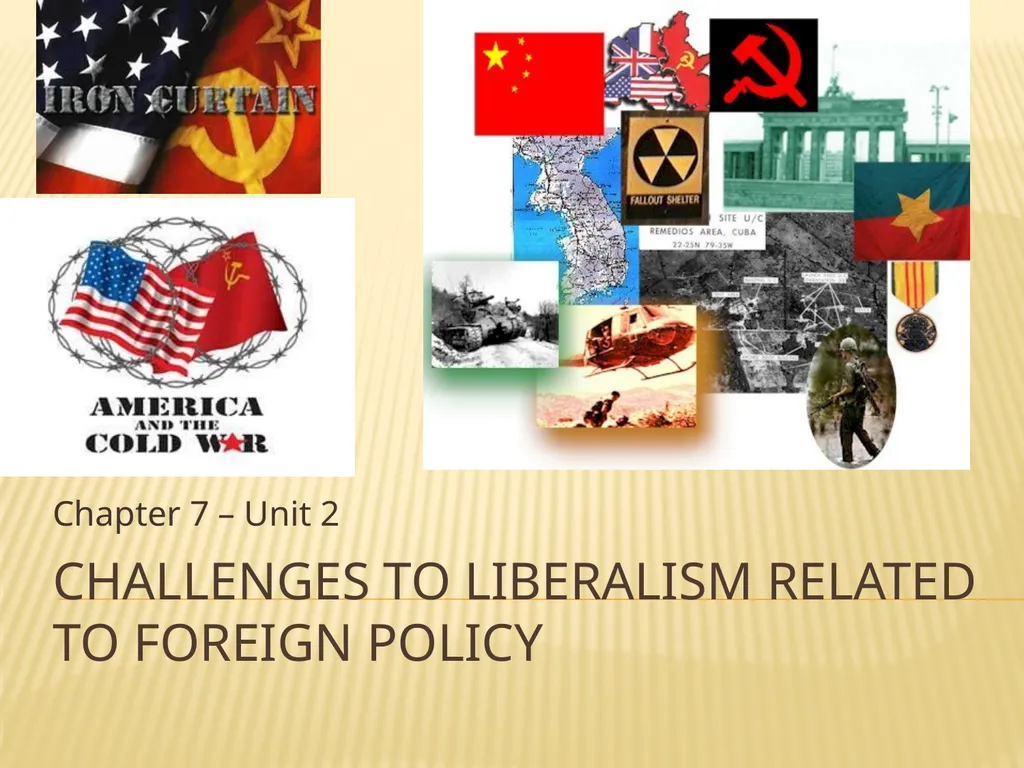
Challenges to liberalism related to foreign policy
Author: phoebe-click | Published: 2025-07-18
Description: Challenges to liberalism related to foreign policy Chapter 7 Unit 2 Chapter focus The Cold War (1945 1991) shaped the second half of the 20th century, and it continues to have significant influence not only on international relations,
Download Presentation
Download the PPT/PDF: Download
Transcript:
Loading transcript…